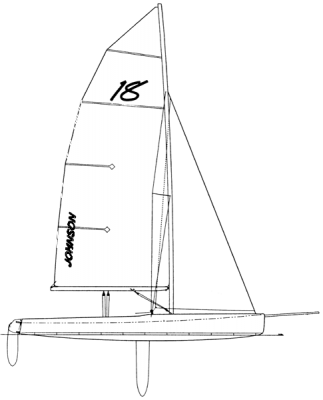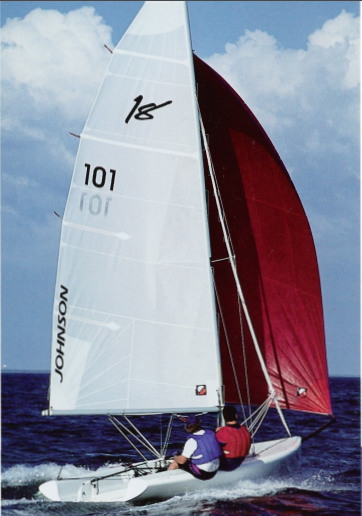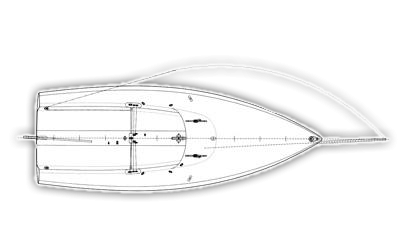| Length Over All (LOA) | 18' | 5.54m |
| LWL | 16'7" |
| | Beam (width) |
6' 7" | 2.03m | | Weight |
~480 lbs | ~218kg | | Sail Area- Mainsail |
127.7 sq ft |
| | Sail Area- Jib |
56.6 sq ft |
| | Sail Area- Spinnaker |
256 sq ft |
| | Draft (depth) |
5" centerboard up | 4' 6" centerboard down |
| Mast Length | 23' | 7.08m |
| Designer | Rodger Martin | | Year Introduced |
1994 |
|







